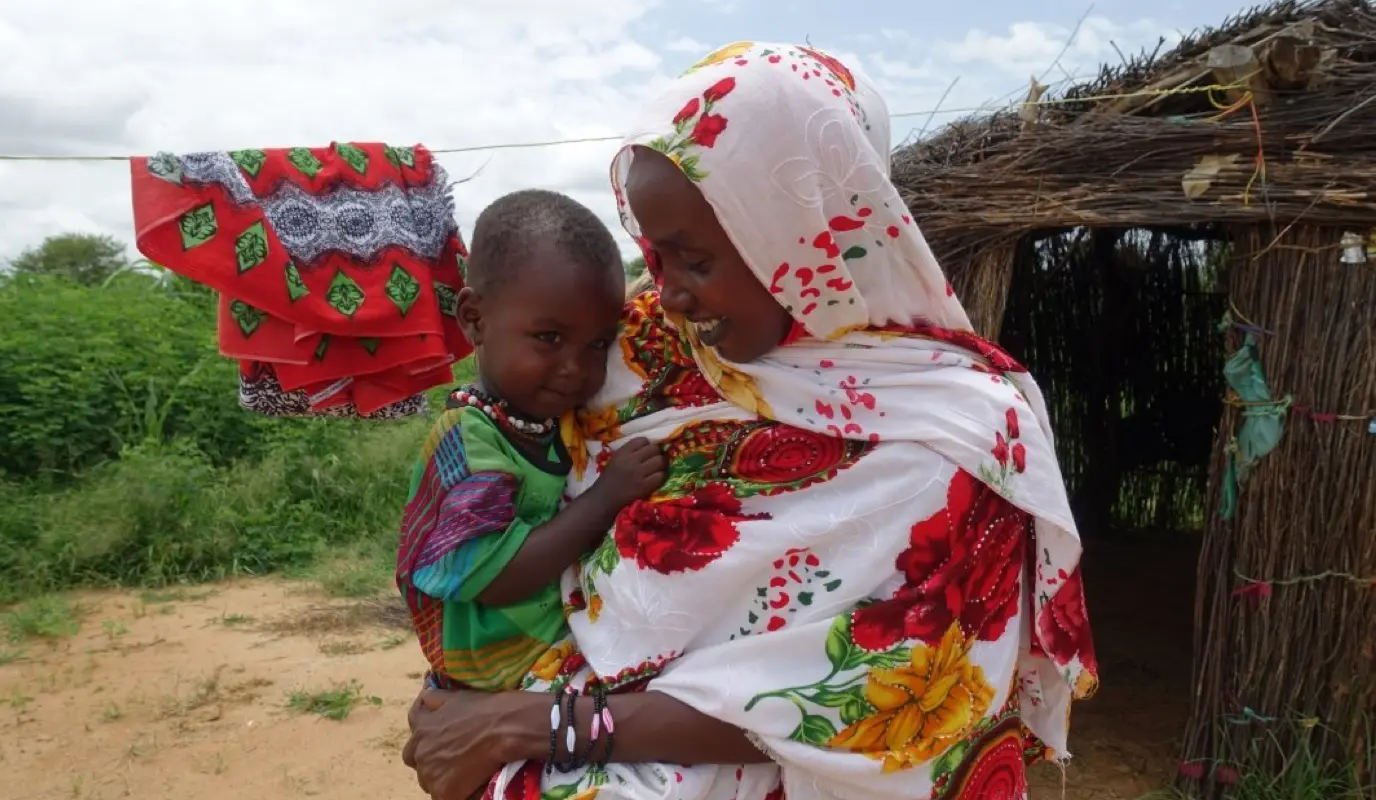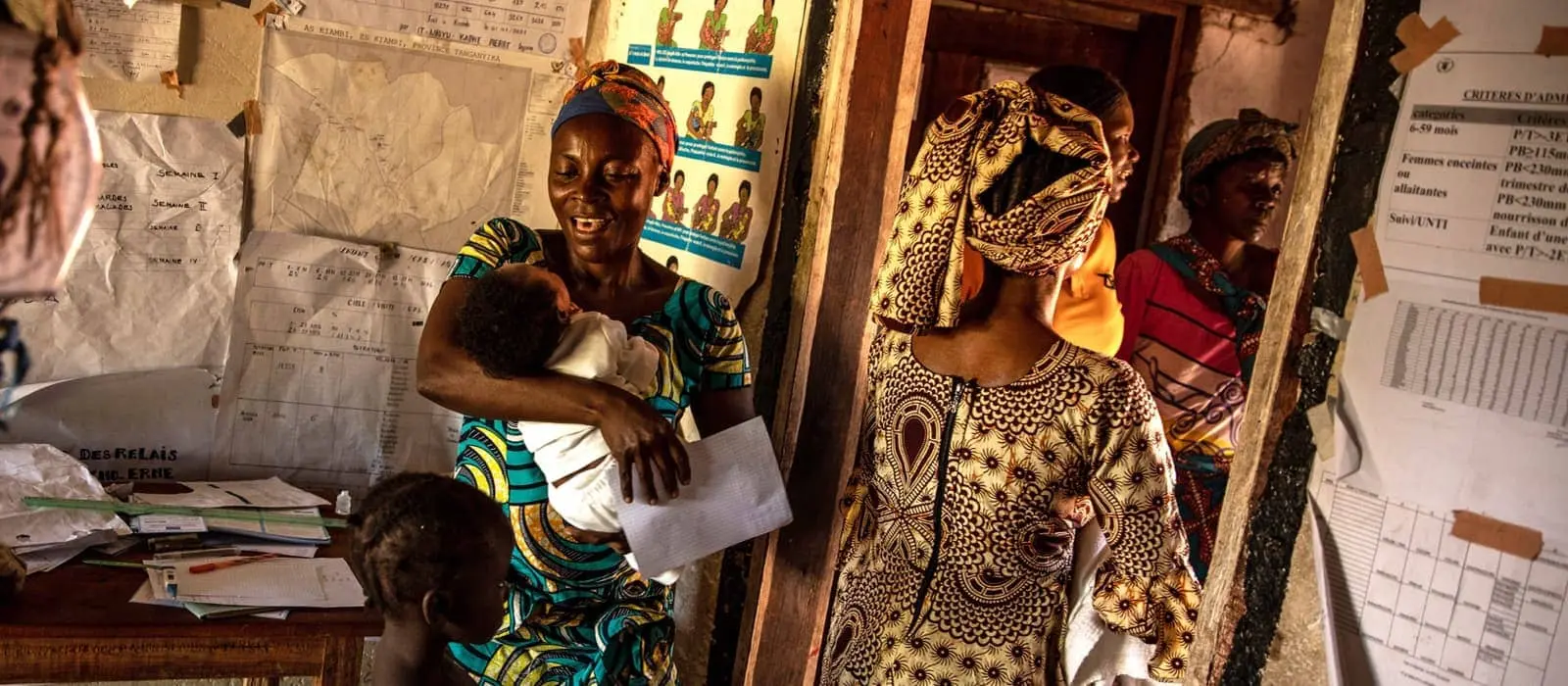The long-term effects of hunger on maternal health can carry over into the health of newborns, and carry a lifelong impact. But that can be changed.
Women and Hunger
As Bono has said, poverty is sexist. What’s more, hunger is also sexist, and disproportionately affects women and girls. The World Food Programme estimates that 60% of people suffering from chronic levels of hunger are women and girls. In families with lower levels of food security and economic empowerment, mothers are often the first to reduce their caloric intake by taking smaller portions of food, or skipping meals altogether so that their husbands and children can eat. (Their daughters are usually the next in line if more sacrifices are needed.)
60% of people suffering from chronic levels of hunger are women and girls.
And many of these mothers are young — often still teenagers themselves. While pregnancy is a crucial time for both mothers and their children to receive essential nutrients, for most women this isn’t the reality of their pregnancy. This means that their own bodies, which are still developing, become stunted in growth. Left unchecked, these issues can be passed on to newborns.
But it’s not only women who suffer from this disparity. The long-term effects of hunger on maternal health can carry over into the health of newborns, and carry a lifelong impact.
Hunger and Maternal Health: A Close Relationship
When a mother is undernourished during pregnancy, her own nutritional health isn’t the only health at stake. Any complications brought on by low nutrition during pregnancy, such as anaemia, hypertension, miscarriages, premature delivery, or maternal death, will have an affect on her child as well. Many children born to mothers who are undernourished will likely grow up stunted or with malnutrition themselves. As the UNFPA points out, as these children grow up (especially girls), their options and autonomy will be equally stunted.
Stunting, wasting, and other health complications that come from a lack of proper food and nutrients are contributors to the cycle of poverty. The related health issues that come from this very preventable cause include lower cognitive skills (which means they won’t get as much out of their education), chronic health issues, and fewer opportunities to reach their full potential and — ideally — break the cycle of poverty. When we talk about poverty being generational, this is what we mean.
This doesn’t just affect individuals and families. Communities and even countries suffer when we don’t consider the health of expecting and new mothers and their children.

Breaking the Cycle
19-year-old Ache is a mother of two in Chad, living with her husband along with her little girl and baby boy (2-year-old Maimouna and newborn Bahar). On a daily basis, she faces a long commute to go from home to work and back again to feed her family of four.
“When I wake up early in the morning, I prepare breakfast for myself, my children and my husband, and then I leave for the field,” Ache explains. “Because my field is so far away that it takes all day to get there, so I don’t get back until the evening to prepare dinner.”
During her first pregnancy with Maimouna, Ache suffered from malnutrition. When Maimouna was born, she was also frequently ill. History seemed ready to repeat itself when Ache became pregnant with Bahar, but one key ingredient changed. She was seen by a Concern Community Health Volunteer, one of her fellow community members who understood the experiences and expectations placed on young mothers in the region. The advice she gave Ache on feeding her family — and herself — was rooted in that experience. Concern also provided Ache with a special fortified flour used to improve her health and nutrition, which was a major benefit during her second pregnancy.
Planting the Seeds
The shared advice and learnings in Chad are central to Concern’s community-based healthcare approach, which relies in part on peer support to share best practices to make the best life possible. Ache learned information from Concern health volunteers, who visit families on a monthly basis, that changed the way she approached Bahar’s infancy.
“I learned that when you have a newborn baby you cannot give it any water, but only the breast exclusively for six months,” Ache recalls. “With my first child, I didn’t practice exclusive breastfeeding, but now that I know the technique I will practice it with my new baby. There are differences between the two children because of this.”
Bahar hasn’t gotten as sick as Maimouna did when she was his age. But Ache is also working with Concern to ensure that both of her children can flourish. Among the other programs available in her region, she also has joined Concern’s seed distribution to grow more diverse and nutrient-rich foods. “The seed distribution has helped us very much to grow more food. This has enabled me to feed my family and my children.”

Looking Ahead
While the immediate well-being and nutrition of her children remain Ache’s main concern on a day-to-day basis, she can now focus on long-term goals such as education. She wants both her son and daughter to thrive intellectually as well as physically and now that her family is healthy, she can see a bright future.
“When I’m alone, my daughter and I will continue chatting together. She makes me laugh a lot. She talks to me about lots of things and it always makes me laugh. We joke around together,” Ache says of this precious bonding time. “When she’s old enough, I will take her to school. My dream is to see my children educated.”

The Cycle of Nutrition
While all people should have access to an acceptable amount of nutritious food on a daily basis, we know that’s not currently the reality — and, as of 2020, we’re slipping backwards on progress to reach Zero Hunger. In recent years, Concern’s strategy around nutrition has evolved to focus primarily on working with adolescent girls, women of reproductive age, and children under 2.
Many barriers prevent women and girls from realizing their right to good nutrition, but by investing in their own nutritional futures, we’ve seen from experience and data that this behavioral shift and new knowledge has a ripple effect. Children are more likely to survive infancy and reach greater potential. From one generation to the next, priorities and communities can change and reach a greater overall sense of health, wellness, and economic independence.
Our approach to nutrition, hunger, and maternal health revolves around five key initiatives that address all stages of this cycle:
Breastfeeding
We work with mothers to advocate exclusive breastfeeding for the first six months of a child’s life, and continuing with other forms of feeding in the first year.
Complementary Feeding
After the first six months, we recommend appropriate weaning and complementary feeding with attention paid to the quality and quantity of a child’s diet.
Micronutrient Supplements for Infants and Children: Vitamin A and Preventative Zinc
Data support Vitamin A and preventative zinc as key nutrients for infants and children in their early development.
Supplements for Pregnant and Breastfeeding Women
We recommend folic acid, micronutrients or iron-folate, calcium, and balanced energy protein to ensure that mothers-to-be are healthy throughout their pregnancy and that new mothers are passing on nutrients to their children through breastmilk.
Management of Severe and Moderate Acute Malnutrition
Focusing on the first four points is proven to reduce the instances of severe and acute malnutrition in children under 5. In cases where children are still diagnosed with malnutrition on some level, however, there are treatment options. The current standard of choice is the Community Management of Acute Malnutrition (CMAM), which includes community-based diagnosis and treatment through therapeutic foods.



